Street NamesAnthony Borgo2018-03-28T18:30:30-06:00
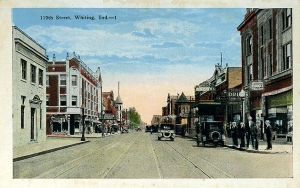 Everyday we drive down them, or we may even live on them but have you ever taken the time to find out the story behind your street’s name? The streets in Whiting and Robertsdale do more than provide a location or an address. The street names also provide a mirror to the city’s historic past. The history of Whiting-Robertsdale can be divided into three distinct headings: the early pioneers, the advent of the railroad, and the arrival of the Standard Oil Company. The names of the streets can also be separated into these three areas. So read along and discover the story behind your street.
Everyday we drive down them, or we may even live on them but have you ever taken the time to find out the story behind your street’s name? The streets in Whiting and Robertsdale do more than provide a location or an address. The street names also provide a mirror to the city’s historic past. The history of Whiting-Robertsdale can be divided into three distinct headings: the early pioneers, the advent of the railroad, and the arrival of the Standard Oil Company. The names of the streets can also be separated into these three areas. So read along and discover the story behind your street.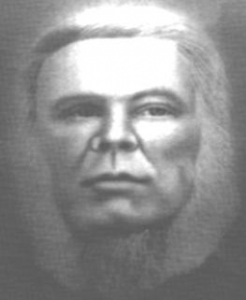 in 1847 and quickly gained a reputation for being a superb hunter. He also was known for his real estate holdings becoming the first person to buy land in what would become the Whiting-Robertsdale area. Between 1851 and 1857, Roberts bought 471 acres from soldiers holding Federal land warrants from the State of Indiana, and from Mexican War veterans for $1.25 an acre. He used 320 acres for a farm where he raised cattle, sheep, hogs and horses. Roberts negotiated the rest of his land to other early settlers and land developers. He was also a generous man, donating a right-of-way across his land to the Pennsylvania Railroad. The railroad went on to build a station on Roberts’ land and named it Robertsdale in honor of the benefactor. This became its legal title in 1872. Roberts Avenue was also named after him. After the death of George Roberts, the majority of his land was left to his daughters. Amy Avenue was named after George Roberts’ daughter Amy who, around the turn of the century, cut up a chunk of her father’s land into lots 25 feet wide by 117.15 to 119.13 feet long. The lots were located in the area that is now found between Roberts and Amy Avenues. The lots were titled “Roberts’ First Addition to Hammond, Indiana.” This land development was within walking distance of the Green Line trolley, and not far from the Standard Oil refinery, ideal for the new blue-collar homeowners. Myrtle Avenue was originally named Harrison but it was often confused with Harrison Street in Hammond. The name was later changed to Myrtle after Myrtle Gehrke Gardner who was another one of George Roberts’ daughters. She was also very involved as a member of the Robertsdale PTA. Finally, I have been told by a few individuals that Pearl Street was also named after George Roberts’ third daughter, Pearl.
in 1847 and quickly gained a reputation for being a superb hunter. He also was known for his real estate holdings becoming the first person to buy land in what would become the Whiting-Robertsdale area. Between 1851 and 1857, Roberts bought 471 acres from soldiers holding Federal land warrants from the State of Indiana, and from Mexican War veterans for $1.25 an acre. He used 320 acres for a farm where he raised cattle, sheep, hogs and horses. Roberts negotiated the rest of his land to other early settlers and land developers. He was also a generous man, donating a right-of-way across his land to the Pennsylvania Railroad. The railroad went on to build a station on Roberts’ land and named it Robertsdale in honor of the benefactor. This became its legal title in 1872. Roberts Avenue was also named after him. After the death of George Roberts, the majority of his land was left to his daughters. Amy Avenue was named after George Roberts’ daughter Amy who, around the turn of the century, cut up a chunk of her father’s land into lots 25 feet wide by 117.15 to 119.13 feet long. The lots were located in the area that is now found between Roberts and Amy Avenues. The lots were titled “Roberts’ First Addition to Hammond, Indiana.” This land development was within walking distance of the Green Line trolley, and not far from the Standard Oil refinery, ideal for the new blue-collar homeowners. Myrtle Avenue was originally named Harrison but it was often confused with Harrison Street in Hammond. The name was later changed to Myrtle after Myrtle Gehrke Gardner who was another one of George Roberts’ daughters. She was also very involved as a member of the Robertsdale PTA. Finally, I have been told by a few individuals that Pearl Street was also named after George Roberts’ third daughter, Pearl. Forsythe Ave., Caroline Ave., Oliver Street, and Clark Street
Forsythe Ave., Caroline Ave., Oliver Street, and Clark Street 1854, Christof, a merchant, bought land in this area and brought his family to these swampy lands becoming the first family of Whiting. Henry Schrage, Christof’s son, joined the Union Army where he fought alongside Sherman on the “March to the Sea.” After the Civil War, Henry came back to Whiting and worked on the railroads making $1.10 a day. In 1868, Henry Schrage was married to Caroline Wuestenfeldt. That same year he opened Whiting’s first store, which his wife ran, selling precious commodities to the early settlers. The store was located near the Lake Shore and Michigan Southern station. In 1871, Whiting’s first post office was opened in their store, and Henry became the city’s first postmaster until 1892 when his son Henry, Jr. took over. Fourteen years later, Henry Schrage opened Whiting’s first financial institution, The Bank of Whiting. Henry’s son Walter was also an important member of Whiting’s refinement. Walter E. Schrage was born in Whiting on December 31, 1884. After completing his education he accepted a job at his father’s bank in 1903. Fourteen years later he was elevated to President of the Bank of Whiting. In 1913, Walter Schrage was elected mayor of Whiting, when he ran on the Citizens’ ticket. He went on to serve as the mayor of Whiting for 15 consecutive years.
1854, Christof, a merchant, bought land in this area and brought his family to these swampy lands becoming the first family of Whiting. Henry Schrage, Christof’s son, joined the Union Army where he fought alongside Sherman on the “March to the Sea.” After the Civil War, Henry came back to Whiting and worked on the railroads making $1.10 a day. In 1868, Henry Schrage was married to Caroline Wuestenfeldt. That same year he opened Whiting’s first store, which his wife ran, selling precious commodities to the early settlers. The store was located near the Lake Shore and Michigan Southern station. In 1871, Whiting’s first post office was opened in their store, and Henry became the city’s first postmaster until 1892 when his son Henry, Jr. took over. Fourteen years later, Henry Schrage opened Whiting’s first financial institution, The Bank of Whiting. Henry’s son Walter was also an important member of Whiting’s refinement. Walter E. Schrage was born in Whiting on December 31, 1884. After completing his education he accepted a job at his father’s bank in 1903. Fourteen years later he was elevated to President of the Bank of Whiting. In 1913, Walter Schrage was elected mayor of Whiting, when he ran on the Citizens’ ticket. He went on to serve as the mayor of Whiting for 15 consecutive years. early pioneers, Carl and John Steiber who settled in this area between 1850 and 1860. Reese Avenue was named after Henry Reese, one of the early settlers. When Henry Reese left his native town of Hohnhurt in Hesse, Germany to come to America, a woman ran out saying, “When you get to America, ask the first man you see, where does Carl Steiber live?” America was not as small as the woman thought, but Reese did soon learn about Carl Steiber. Henry Reese was working in Arlington Heights, when another friend, also a Hessian, told him that Carl Steiber was the section boss on a new railroad in what would become Whiting, and that he was paying his men the wonderfully large wage of $1 a day. In the spring of 1854, Reese brought his wife and three-week-old baby to the Whiting area and was at once put to work by Steiber. There were no houses to be had in the area, so Steiber and his men stopped work for a couple hours and built Reese and his family a log home on the railroad’s right of way. It took fifteen men two hours to build the home. During the 1870s and 1880s Henry Reese also served as a School Trustee in the Whiting-Robertsdale area.
early pioneers, Carl and John Steiber who settled in this area between 1850 and 1860. Reese Avenue was named after Henry Reese, one of the early settlers. When Henry Reese left his native town of Hohnhurt in Hesse, Germany to come to America, a woman ran out saying, “When you get to America, ask the first man you see, where does Carl Steiber live?” America was not as small as the woman thought, but Reese did soon learn about Carl Steiber. Henry Reese was working in Arlington Heights, when another friend, also a Hessian, told him that Carl Steiber was the section boss on a new railroad in what would become Whiting, and that he was paying his men the wonderfully large wage of $1 a day. In the spring of 1854, Reese brought his wife and three-week-old baby to the Whiting area and was at once put to work by Steiber. There were no houses to be had in the area, so Steiber and his men stopped work for a couple hours and built Reese and his family a log home on the railroad’s right of way. It took fifteen men two hours to build the home. During the 1870s and 1880s Henry Reese also served as a School Trustee in the Whiting-Robertsdale area.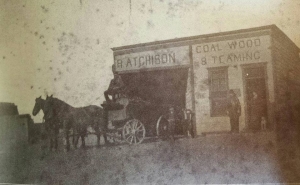 Like Reese, there were several early settlers who, although not great land developers or prominent founding fathers, had streets named after them for their love of adventure and their pioneering spirit. Atchison Avenue was named after Robert Atchison who settled in this area between 1850 and 1860. Atchison was a gravel-shipper and owned some property in Whiting. Some time after Carl Steiber retired, Atchison served as section boss on the southern track of the railroad. Robert Atchison’s youngest daughter married George M. Roberts late in his life. Davis Avenue was named after E. S. Davis, an early settler who also worked as a gravel-shipper. Kelly Place was named after the Kellys who were famous in this area. Tim Kelly, Pat Kelly and Jim Kelly were all section bosses for the railroad. They were relatives of old man McCrea, who lived east a few miles down the railroad from Whiting. McCrea had so many children and grandchildren that he was related to almost everybody in the settlements east of Whiting. Benjamin Place, located in Robertsdale, was named after Benjamin Lipshutz, a heating and plumbing contractor for the development of this subdivision.
Like Reese, there were several early settlers who, although not great land developers or prominent founding fathers, had streets named after them for their love of adventure and their pioneering spirit. Atchison Avenue was named after Robert Atchison who settled in this area between 1850 and 1860. Atchison was a gravel-shipper and owned some property in Whiting. Some time after Carl Steiber retired, Atchison served as section boss on the southern track of the railroad. Robert Atchison’s youngest daughter married George M. Roberts late in his life. Davis Avenue was named after E. S. Davis, an early settler who also worked as a gravel-shipper. Kelly Place was named after the Kellys who were famous in this area. Tim Kelly, Pat Kelly and Jim Kelly were all section bosses for the railroad. They were relatives of old man McCrea, who lived east a few miles down the railroad from Whiting. McCrea had so many children and grandchildren that he was related to almost everybody in the settlements east of Whiting. Benjamin Place, located in Robertsdale, was named after Benjamin Lipshutz, a heating and plumbing contractor for the development of this subdivision.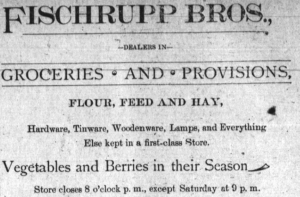 Fischrupp Avenue, John Street and Fred Street
Fischrupp Avenue, John Street and Fred Street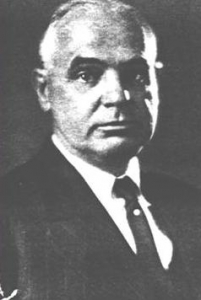
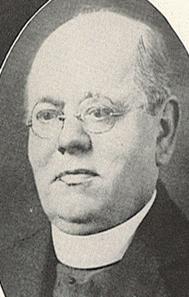 After establishing Sacred Heart Church in 1897, Bishop Rademacher sent to Hungary for a priest who could speak Slovak and who would best minister to the needs of a growing foreign population. In answer to his request, Father Benedict M. Rajcany arrived that year and immediately proceeded to organize a new parish. Father Rajcany’s first task was to build a house of worship. The church was dedicated on July 4, 1897 to St. John the Baptist, because Father Rajcany himself felt like “one crying out in the wilderness” in the frontier that was early Whiting. He then went on to build a pastoral residence and accommodations for pupils and their teachers. Father Benedict Rajcany was born on February 2, 1869 in Galgocz, Hungary. He was a member of the Franciscan order and was ordained a priest in Tiernan on January 23, 1892. In 1910, St. John the Baptist’s congregation reportedly numbered 1,500 members of which, 1,300 were Whiting residents. By 1924, St John the Baptist had a membership of 3,250 which was the largest Slovak church in the Calumet region. The street to the north of St. John the Baptist church, Benedict Avenue, was named in Father Benedict Rajcany’s honor for his years of dedicated service to the community.
After establishing Sacred Heart Church in 1897, Bishop Rademacher sent to Hungary for a priest who could speak Slovak and who would best minister to the needs of a growing foreign population. In answer to his request, Father Benedict M. Rajcany arrived that year and immediately proceeded to organize a new parish. Father Rajcany’s first task was to build a house of worship. The church was dedicated on July 4, 1897 to St. John the Baptist, because Father Rajcany himself felt like “one crying out in the wilderness” in the frontier that was early Whiting. He then went on to build a pastoral residence and accommodations for pupils and their teachers. Father Benedict Rajcany was born on February 2, 1869 in Galgocz, Hungary. He was a member of the Franciscan order and was ordained a priest in Tiernan on January 23, 1892. In 1910, St. John the Baptist’s congregation reportedly numbered 1,500 members of which, 1,300 were Whiting residents. By 1924, St John the Baptist had a membership of 3,250 which was the largest Slovak church in the Calumet region. The street to the north of St. John the Baptist church, Benedict Avenue, was named in Father Benedict Rajcany’s honor for his years of dedicated service to the community.
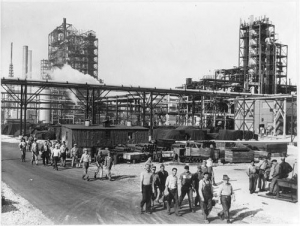 Standard Avenue and Stewart Court
Standard Avenue and Stewart Court
 Warwick Avenue
Warwick Avenue
 Oil and the birth of Whiting as a booming industrial town. Gallus J. Bader and Fred J. Smith were two great financial leaders known throughout East Chicago, Indiana Harbor and Whiting. They were the founders of some of the strongest financial institutions in the Calumet area. Bader and Smith fist forged a partnership when they established a bakery and restaurant in Whiting. One day one of their guests mentioned that there were many possibilities in Whiting real estate. The young men listened, and after several failures, they found a man who had a piece of property equivalent to thirteen city lots which he was willing to sell for $3,000. The only problem was that the two partners had combined a total savings of $1,000 and had not acquired the art of borrowing. This didn’t stop the two entrepreneurs. The two men asked friends to join in this venture. The property was situated on the corner of New York Avenue and 121st Street and was labeled as the Smith & Bader subdivision. It took three years to sell off the thirteen lots. The first deal was finalized on March 7, 1898. With the proceeds of the first land deal, the two partners purchased nine and a quarter acres from Jacob Forsythe naming it Sheridan Park. These lots were very desirable and sold quickly, which allowed Smith and Bader to retire from the bakery business and to work full time as real estate developers. In 1900 they purchased additional acreage from the Forsythe estate which extended from Sheridan Park to Atchison Avenue and from 117th Street to 119th Street. This area was platted and titled the Central Park subdivision. In the meantime, Smith and Bader bought and sold various small parcels of land. During this time they also started up a large insurance business where they acted as agents for out of town property holders. Thanks to the help of Smith and Bader, Whiting grew from a village of shacks to a beautiful residential city. Their business grew to such an extent that it was necessary to bring on another partner. Smith and Bader selected C. D. Davidson, a rising young real estate man from Whiting who was looking to expand his market. They sold Davidson an interest in their company which increased their capitol stock from $25,000 to $35,000. The Smith, Bader and Davidson company was now able to purchase even more land. The two men were also interested in the development of financial institutions, including the First National Bank of Whiting and the First Trust and Savings of Whiting. It’s possible that while developing Whiting’s neighborhoods with Davidson, Smith and Bader decided to name one of them after their hometown. Both men were born in LaPorte County, Indiana, where their parent’s were pioneers.
Oil and the birth of Whiting as a booming industrial town. Gallus J. Bader and Fred J. Smith were two great financial leaders known throughout East Chicago, Indiana Harbor and Whiting. They were the founders of some of the strongest financial institutions in the Calumet area. Bader and Smith fist forged a partnership when they established a bakery and restaurant in Whiting. One day one of their guests mentioned that there were many possibilities in Whiting real estate. The young men listened, and after several failures, they found a man who had a piece of property equivalent to thirteen city lots which he was willing to sell for $3,000. The only problem was that the two partners had combined a total savings of $1,000 and had not acquired the art of borrowing. This didn’t stop the two entrepreneurs. The two men asked friends to join in this venture. The property was situated on the corner of New York Avenue and 121st Street and was labeled as the Smith & Bader subdivision. It took three years to sell off the thirteen lots. The first deal was finalized on March 7, 1898. With the proceeds of the first land deal, the two partners purchased nine and a quarter acres from Jacob Forsythe naming it Sheridan Park. These lots were very desirable and sold quickly, which allowed Smith and Bader to retire from the bakery business and to work full time as real estate developers. In 1900 they purchased additional acreage from the Forsythe estate which extended from Sheridan Park to Atchison Avenue and from 117th Street to 119th Street. This area was platted and titled the Central Park subdivision. In the meantime, Smith and Bader bought and sold various small parcels of land. During this time they also started up a large insurance business where they acted as agents for out of town property holders. Thanks to the help of Smith and Bader, Whiting grew from a village of shacks to a beautiful residential city. Their business grew to such an extent that it was necessary to bring on another partner. Smith and Bader selected C. D. Davidson, a rising young real estate man from Whiting who was looking to expand his market. They sold Davidson an interest in their company which increased their capitol stock from $25,000 to $35,000. The Smith, Bader and Davidson company was now able to purchase even more land. The two men were also interested in the development of financial institutions, including the First National Bank of Whiting and the First Trust and Savings of Whiting. It’s possible that while developing Whiting’s neighborhoods with Davidson, Smith and Bader decided to name one of them after their hometown. Both men were born in LaPorte County, Indiana, where their parent’s were pioneers.